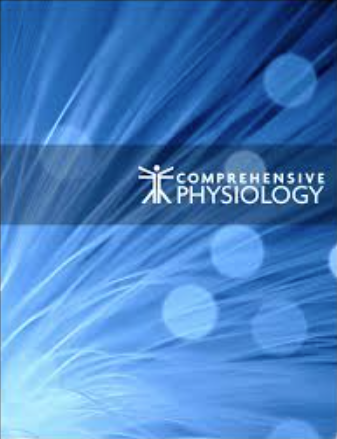下载PDF
{"title":"Familial Hyperkalemic Hypertension.","authors":"Ryan J Cornelius, Yujiro Maeoka, Ujwal Shinde, James A McCormick","doi":"10.1002/cphy.c240004","DOIUrl":null,"url":null,"abstract":"<p><p>The rare disease Familial Hyperkalemic Hypertension (FHHt) is caused by mutations in the genes encoding Cullin 3 (CUL3), Kelch-Like 3 (KLHL3), and two members of the With-No-Lysine [K] (WNK) kinase family, WNK1 and WNK4. In the kidney, these mutations ultimately cause hyperactivation of NCC along the renal distal convoluted tubule. Hypertension results from increased NaCl retention, and hyperkalemia by impaired K <sup>+</sup> secretion by downstream nephron segments. CUL3 and KLHL3 are now known to form a ubiquitin ligase complex that promotes proteasomal degradation of WNK kinases, which activate downstream kinases that phosphorylate and thus activate NCC. For CUL3, potent effects on the vasculature that contribute to the more severe hypertensive phenotype have also been identified. Here we outline the in vitro and in vivo studies that led to the discovery of the molecular pathways regulating NCC and vascular tone, and how FHHt-causing mutations disrupt these pathways. Potential mechanisms for variability in disease severity related to differential effects of each mutation on the kidney and vasculature are described, and other possible effects of the mutant proteins beyond the kidney and vasculature are explored. © 2024 American Physiological Society. Compr Physiol 14:5839-5874, 2024.</p>","PeriodicalId":10573,"journal":{"name":"Comprehensive Physiology","volume":"14 5","pages":"5839-5874"},"PeriodicalIF":5.2000,"publicationDate":"2024-12-19","publicationTypes":"Journal Article","fieldsOfStudy":null,"isOpenAccess":false,"openAccessPdf":"https://www.ncbi.nlm.nih.gov/pmc/articles/PMC12327360/pdf/","citationCount":"0","resultStr":null,"platform":"Semanticscholar","paperid":null,"PeriodicalName":"Comprehensive Physiology","FirstCategoryId":"3","ListUrlMain":"https://doi.org/10.1002/cphy.c240004","RegionNum":2,"RegionCategory":"医学","ArticlePicture":[],"TitleCN":null,"AbstractTextCN":null,"PMCID":null,"EPubDate":"","PubModel":"","JCR":"Q1","JCRName":"PHYSIOLOGY","Score":null,"Total":0}
引用次数: 0
引用
批量引用
Abstract
The rare disease Familial Hyperkalemic Hypertension (FHHt) is caused by mutations in the genes encoding Cullin 3 (CUL3), Kelch-Like 3 (KLHL3), and two members of the With-No-Lysine [K] (WNK) kinase family, WNK1 and WNK4. In the kidney, these mutations ultimately cause hyperactivation of NCC along the renal distal convoluted tubule. Hypertension results from increased NaCl retention, and hyperkalemia by impaired K + secretion by downstream nephron segments. CUL3 and KLHL3 are now known to form a ubiquitin ligase complex that promotes proteasomal degradation of WNK kinases, which activate downstream kinases that phosphorylate and thus activate NCC. For CUL3, potent effects on the vasculature that contribute to the more severe hypertensive phenotype have also been identified. Here we outline the in vitro and in vivo studies that led to the discovery of the molecular pathways regulating NCC and vascular tone, and how FHHt-causing mutations disrupt these pathways. Potential mechanisms for variability in disease severity related to differential effects of each mutation on the kidney and vasculature are described, and other possible effects of the mutant proteins beyond the kidney and vasculature are explored. © 2024 American Physiological Society. Compr Physiol 14:5839-5874, 2024.
家族性高钾血症高血压。
罕见疾病家族性高钾血症高血压(FHHt)是由Cullin 3 (CUL3)、Kelch-Like 3 (KLHL3)以及与- no -赖氨酸[K] (WNK)激酶家族的两个成员WNK1和WNK4基因突变引起的。在肾脏中,这些突变最终导致沿肾远曲小管的NCC过度活化。高血压是由NaCl潴留增加引起的,而高钾血症是由下游肾元段K +分泌受损引起的。目前已知CUL3和KLHL3形成泛素连接酶复合物,促进WNK激酶的蛋白酶体降解,从而激活下游磷酸化激酶,从而激活NCC。对于CUL3,对脉管系统的有效影响导致更严重的高血压表型也已被确定。在这里,我们概述了体外和体内研究,这些研究发现了调节NCC和血管张力的分子途径,以及引起fhht的突变如何破坏这些途径。描述了与每种突变对肾脏和脉管系统的不同影响相关的疾病严重程度变异性的潜在机制,并探讨了突变蛋白对肾脏和脉管系统之外的其他可能影响。©2024美国生理学会。[j] .中国生物医学工程学报,2016。
本文章由计算机程序翻译,如有差异,请以英文原文为准。

 求助内容:
求助内容: 应助结果提醒方式:
应助结果提醒方式:


